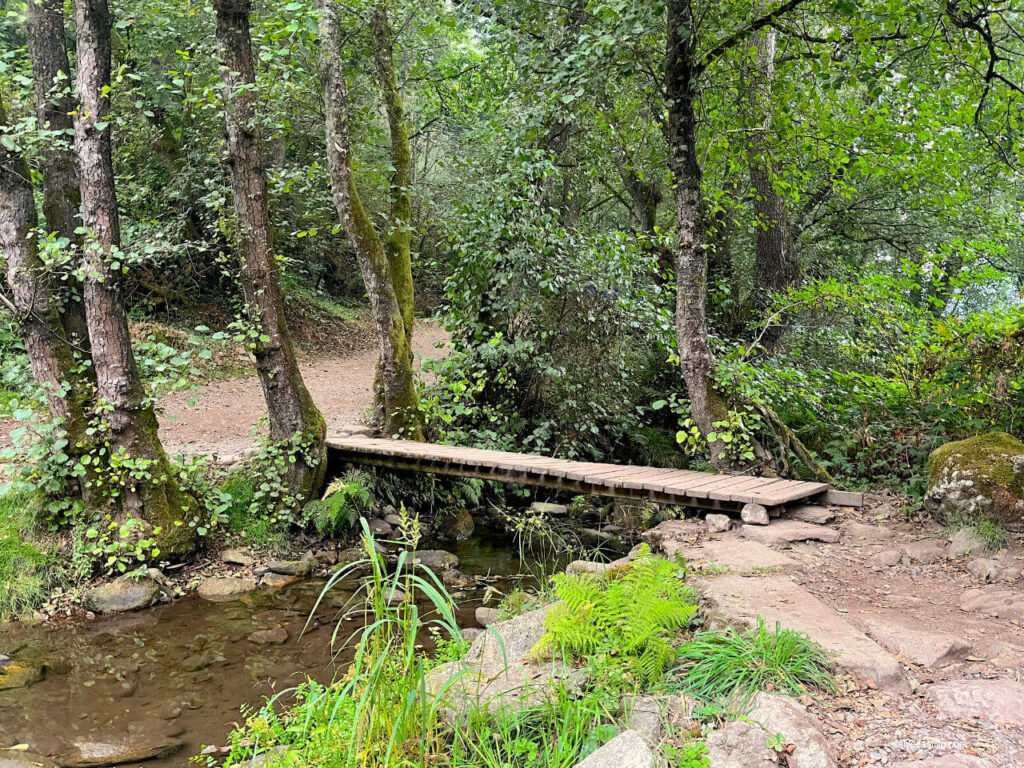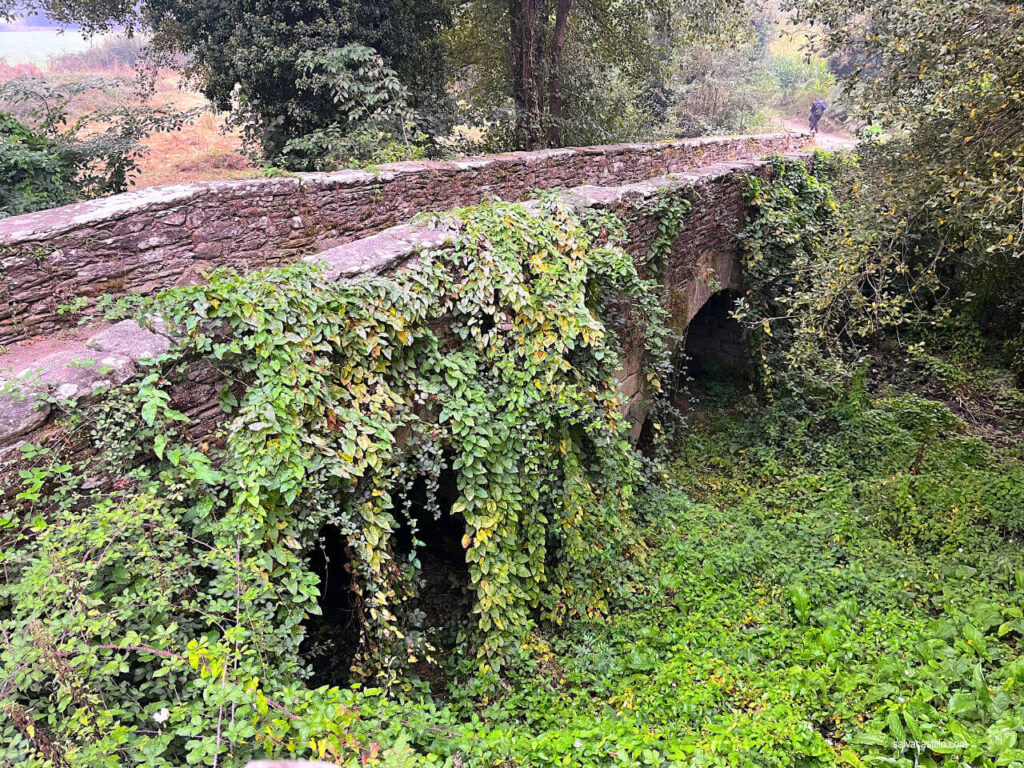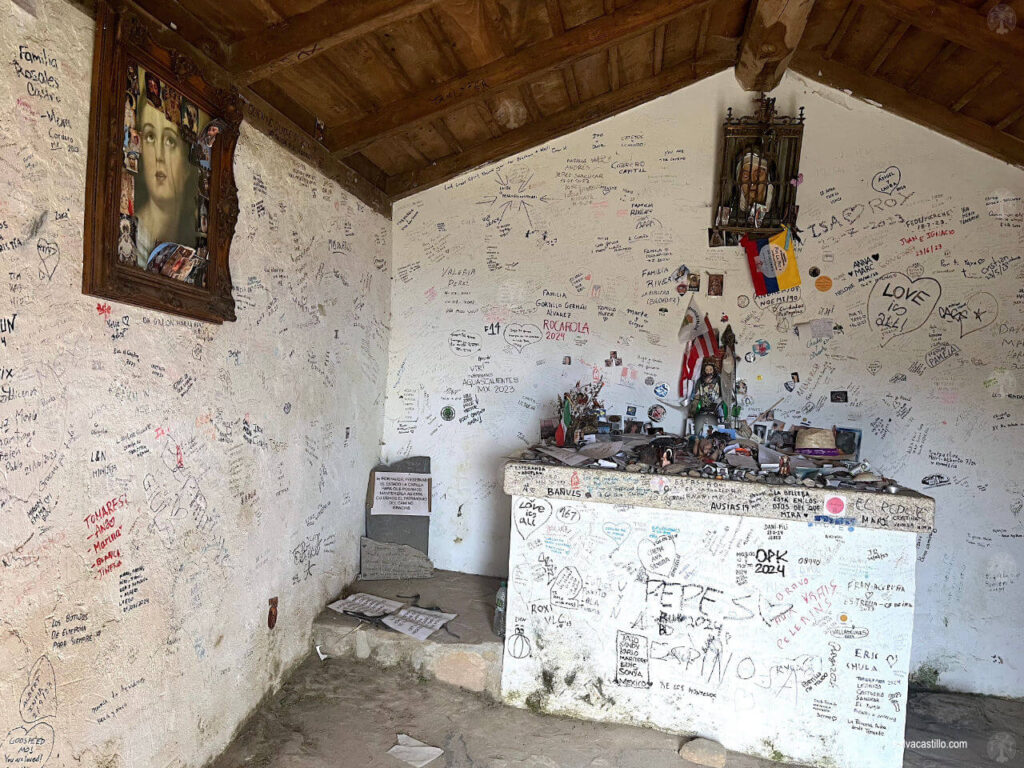The town of Sarria is the most common starting place to make the “short way” to Santiago, covering approximately the last 115 km to Santiago de Compostela, along the route of the French Way. Therefore, I expected that there would be a larger flow of pilgrims than the following days, but of course, it was a miscalculation. If we consider that ideally all pilgrims who start the Camino finish it in more or less the same stages, the Camino behaves then -with seasonal variations- as a stationary and closed system of constant flow, so the number and frequency of pilgrims is very similar along the stages one travels.
Tired from the previous journey of arrival, and taking advantage of the fact that there was no one in the hostel, I slept on my own and by the time I realized, it was already 9 am -too late!- and I was one of the last to leave Sarria. Not exactly the last because there are always other people, 15 meters ahead or 30 meters behind. Just very few of them.

The first dilemma came when leaving Sarria with the option of following two different branches of the road: the traditional way or the alternative way. Without knowing each other at all, 4 or 5 pilgrims looked at each other and asked which was the best. No one knew for sure, but a very smart girl did a Google query and reported that it was better to go the traditional way. None of us knew each other, but we all listened to the girl and continued on the traditional path separated by a few dozen meters from each other. Tell me about natural leadership.

Loaded with my backpack on my back, leaving Sarria there is a very bucolic stream and lush forests, full of vegetation … and 800-900 mts. long hill with a very vertical slope that made me stop a couple of times to catch my breath. Great welcoming, as if to give us an idea of what was coming.

Once the summit is reached, a more or less flat path begins -with slight slopes- making a right turn and leaving on both sides of the road some pictures of the tilled Galician countryside. Very nice. These landscapes are a constant along the way.
The hospitality establishments are distributed along the road at reasonable intervals. That is, if in one you are not very convinced to stop in one, usually in less than 4 Km. / 1 hour you can find another place.
As no one is Usain Bolt and most of us have a similar walking pace, more or less the same group of strangers you start walking with is the one you share the road with that day. Farms dot the road and their animals seem to be more than used to the hustle and bustle of the pilgrims. The same girl who enlightened us about which way to go was fascinated by some sheep that approached the fence from where she was looking at them. I walked a long way with Dolores and Rodolfo, from San Juan de Tucumán in Argentina, who asked me what an horreo was -there are dozens of them along the way-, and we ended up talking about the Treaty of Utrecht by which Gibraltar became part of the British crown -I was sloppy and confused it with the Treaty of Versailles-. They were continuing their trip through Spain in Malaga and intended to visit Gibraltar. I suggested them to visit Tarifa and have a look at Africa from the top of the southernmost road.
This horse was grazing in the trough you can see in the background while I was going to take a picture of him, and I don’t know what caught his attention, but when he saw me he moved without hesitation towards the gate where I was. He let himself be petted by me and reached for my hand insistently. There was a group of two British couples – by the looks of them and their English accents – who were watching us and I asked them to take a picture. We laughed when the lady who had my cell phone said, “and this is just the moment before he bites you because you don’t give him an apple”. However he didn’t bite me and turned away when I left.

The route often passed through the interior of dense forests, whose trees intertwined above.

This is the Capela de Santa Mariña in Morgade. Vandalized or, who knows, more accessible to young people. Adapt or die. To put up with certain things, it is almost better to die.

Time to bring the cows back home. Time 13:39.

The milestones of the Camino seem to be a bit of a joke. As there are several itineraries – main, alternative, etc. – and different concessions, it seems that the distance they mark is not entirely accurate. Still, there are several that are emblematic of the Camino, like this one that marks a round number (100) of km to Santiago de Compostela. How cool it is to have a base ten of numbers. what a coincidence, like the fingers on your hands! /s

I did the journey to Portomarín, on the banks of the Miño river, practically in one go, without stopping, loaded with my ~11 kg backpack. Since I didn’t know how my body would respond and how long it would take me to get there, I decided to exert the maximum demand of myself from the beginning and not stop unless I really had to. After 15 km my psyche changed from “let’s see if I’m not going to be able to get there” to “for what there is remaining to walk, I’d better do it in one go and get it out of the way”. So I didn’t stop until I was 2 or 3 km away from Portomarín, mostly worried that there wouldn’t be any bars with open kitchens by the time I got there -which, indeed, there weren’t: the kitchens open at 7 pm.
I made friends along the way with a person with whom, spontaneously, we decided to go to sleep in the same albergue -since we had no previous reservation- and explore where to go for dinner. Unexpectedly, we had an interesting conversation in a restaurant, surrounded by pilgrims like us. I learned the name “Greta” derives from “Marguerite” in German. On the way back to the hostel I captured this photo of the church-fortress of San Nicolás de Portomarín, which was moved stone by stone from its original location by the creation of the Belesar reservoir. It is a church-fortress because it was in charge of the protection of the bridge and the hospital, by so-called monk-soldiers. It is very beautiful although its interior is rather austere.

The night in the hostel was peculiar: we were the last ones in the kitchen while we prepared a tea to sleep. Sleeping on a bunk bed in a room with 20 other people -some of them world champions of loud snoring- is not easy as I am not being used to share space with unknown people. But such is the pilgrim way, and it definitely has its charms. Nonetheless, it was a great end to a very good day.